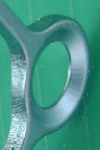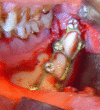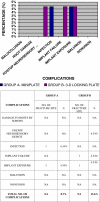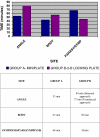Mandibular Osteosynthesis: A Comparative Evaluation of Two Different Fixation Systems Using 2.0 mm Titanium Miniplates and 3-D Locking Plates
- PMID: 22379318
- PMCID: PMC3177501
- DOI: 10.1007/s12663-010-0087-7
Mandibular Osteosynthesis: A Comparative Evaluation of Two Different Fixation Systems Using 2.0 mm Titanium Miniplates and 3-D Locking Plates
Abstract
Purpose: To compare and evaluate postoperative complications and treatment outcome in mandibular fracture fixation using 2.0 mm titanium miniplates and 3-D locking plates.
Method: Thirty patients were divided randomly into two groups of 15 each (including comminuted and malunited fractures). Group A was treated with open reduction internal fixation using 2.0 mm miniplates and group B with 3-D locking plates.
Results: A total of five complications were observed in four patients: implant exposure and infection in miniplate group and postoperative neurosensory deficit, implant failure and implant exposure in 3-D group.
Conclusion: For fractures in symphysis and parasymphysis region, severely displaced angle fractures and for comminuted fractures 3-D locking plate could be a better option. In the angle and body region a single miniplate fixed according to Champy's technique is easy to place with less surgical time, less surgical trauma, is more economical and has similar clinical results.
Keywords: 3-D locking plate; Malunited; Mandibular fracture; Miniplates.
Figures








References
LinkOut - more resources
Full Text Sources
